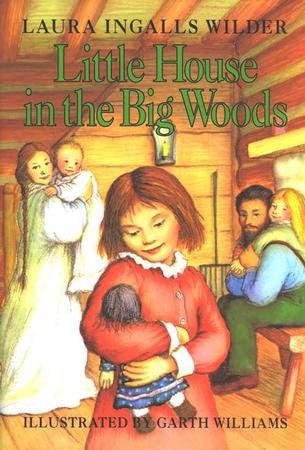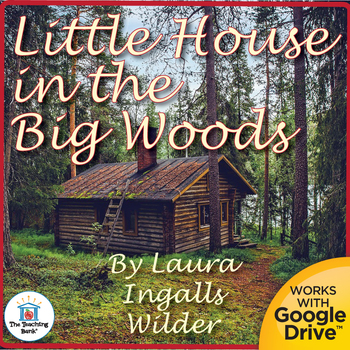

This sense of being cut off from the world - of not even knowing there is a world from which to be cut off - is what allows for this slow-paced narrative to wind its way through the seasons with the utmost attention to detail, with prolonged pauses for digression. It is in this place of isolation that the Ingalls family - Pa, Ma, Mary, Laura, and Carrie - lived, and because of this, Laura had almost no sense of what existed beyond the woods that surrounded them. There were only trees and the wild animals who had their homes among them. As far as a man could go to the north in a day, or a week, or a whole month, there was nothing but woods. The great, dark trees of the Big Woods stood all around the house, and beyond them were other trees and beyond them were more trees.


Right from the start, Wilder, writing of her own childhood, 60 years later and in the third person, casts the setting as utterly devoid of people: It opens in the final days of autumn and takes the reader on a journey through a year in the life of the Ingalls family. I started, as many of us did, with the first book, Little House in the Big Woods. It was through my deep attraction to - sometimes mesmerization with - my prairie girl counterpart that I came to understand the complexities of my own childhood. Yet it was precisely because of these differences that I was eager to steal away every evening into Laura’s world of butter making and tree sapping, of deer slayings and fiddle dances. My urban, upper-middle class upbringing, with its emphasis on high culture and achievement, could not have been more different than Laura’s quiet, rural, community-based one. But Laura and I had more than just a century between us. I first encountered the Little House books as a child, growing up in one of the Upper East Side brownstones that had been built in the years of Laura’s own childhood. Regardless of how you feel about her entrance into the “canon” (I, for one, am unabashedly happy about it), it is worth noting that it took 80 years for it to happen - 80 years in which generations of children read and reread her stories about the pleasures and struggles of life on the American prairie in the decades after the Civil War. For many of us, it is surprising that Wilder had not already held this company, while for others, the introduction of a writer of what has since been labeled “young adult literature” is a bit of a shock. LAST YEAR the Library of America released the nine novels of Laura Ingalls Wilder in a two-volume set, placing her, for the first time, in the company of such great American writers as Thomas Paine, Herman Melville, William Faulkner, and Flannery O’Connor.


 0 kommentar(er)
0 kommentar(er)
